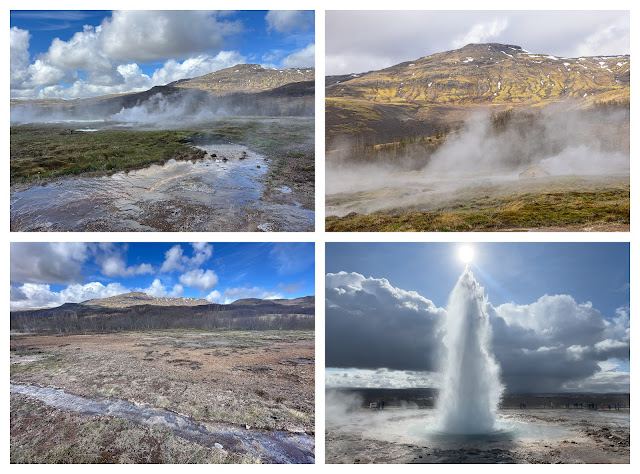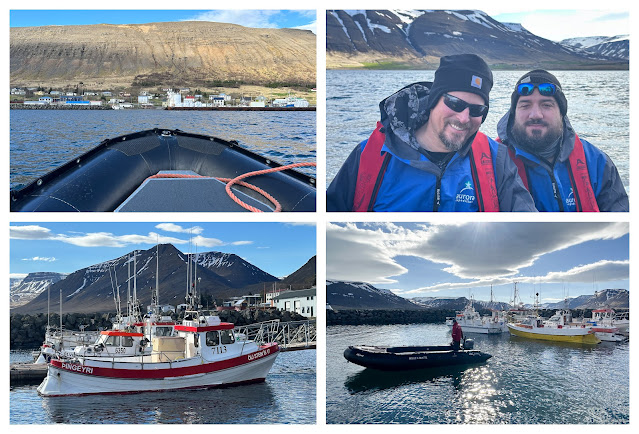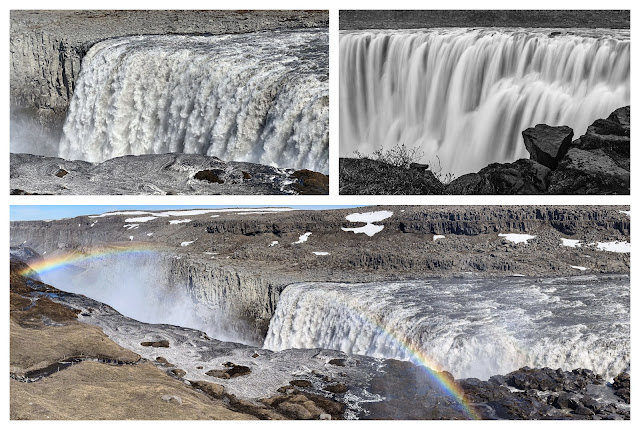What an adventure we have had! Here is a day by day account of our amazing time in Iceland.
20 - 21 May: Reykjavik
We arrive in Reykjavik and sign in to our lovely hotel. Sri arrived later and managed to make his own way to the hotel by bus. What a legend! Apart from Nepal, this is his first trip outside India.
We went for a walk around town and tried some delicious Icelandic hotdogs. Then a delicious but rather expensive meal. Iceland is far from cheap. A burger costs $55!
Jordan arrived late that night and we were all blissfully reunited the next morning.
22 May: Golden Circuit Tour outside Reykjavík
We set out from Reykjavík aboard buses on the classic Golden Circle tour.
First we visited Thingvellir National Park, the site of the 7km long rift where the North American Plate and the European Plate are moving apart at a rate of 2cm per year.
Next, we visited the famous "great geyser", the first geyser to be described in a printed source and the first known to modern Europeans. At the geyser, after what seemed to be an interminable wait, there was a brief blast of boiling water that spurted about 3 or 4 meters into the air. It was easy to miss getting a photo unless you had your finger on the camera shutter button or had the video rolling.
The next stop, just a short distance up the road, was the mighty Gullfoss waterfall, one of Iceland's most famous sights.
Finally, we visited a geothermal power plant that harnesses the heat of nearby geysers and geothermal reservoirs.
At the end of the day, we boarded the Sylvia Earle. We were introduced to our expedition leader and team, participated in a lifeboat drill, and set sail before enjoying dinner together in the Gentoo Restaurant.
 |
| Thingvellir National Park |
 |
| The Great Geyser |
 |
| Gullfoss waterfall |
 |
| Geothermal power plan |
 |
| Geothermal power plant |
23 May: Snaefellsness Peninsula
We took the zodiac to the small town of Arnarstapi on the Snaefellsnes Peninsula.
After a bus journey, we did the Lóndrangar Basalt Cliffs Coastal Hike. The scenery past enormous sculptured rocks was breathtaking.
Our next stop was to take a walk along the bird cliffs named Pufubjarg where thousands of fulmars and kittiwakes nest each year.
After lunch, we hiked up a volcanic crater called Eldborg. The spatter cone is the largest crater along a short volcanic rift, 200 metres in diameter and 50 m deep. Its last eruption was about 5000 years ago.
Finally, before returning to the ship, we stopped at the basalt columns at Geruberg Cliffs. It is known for its impressive row of perfectly shaped hexagonal basalt columns that are spread along a massive cliff. The cliffs are made of dolerite, a coarse-grained basalt rock. The highest pillars are as high as 14 meters and over a meter wide.
During the time away, the ship had repositioned, and we boarded the ship in Grundarfjordur in time for the Captains welcome.
 |
| Zodiac to Arnarstapi |
 |
| Lóndrangar Basalt Cliffs Coastal Hike |
 |
| Lóndrangar Basalt Cliffs Coastal Hike |
 |
| Pufubjarg bird cliffs |
 |
| Pufubjarg bird cliffs |
 |
| Pufubjarg bird cliffs |
 |
| Walk to Eldborg Crater |
 |
| Eldborg Crater |
 |
| basalt columns at Geruberg Cliffs |
24 May: Patreksfjordur & Arnarfjordur
We woke up to the sounds of the ship's thrusters, howling of the wind and drumming of the rain. Our vessel was fighting with wind gusts up to 30 knots in attempting to maintain its position next to the pier of Patreksfjordur - a village of approximately 650 inhabitants.
The huge weather system was raging all over the Westfjords of Iceland and our expedition leader and captain were assessing the conditions. The mooring alongside the pier appeared to be too risky due to severe weather conditions so we decided to take some time and wait for the afternoon hoping that the wind would settle down.
A geology lecture from Marcos, our on-board geology expert, gave us an excellent introduction to Iceland's unique geology, covering tectonic movement, volcanic activity, and glaciers.
In the afternoon we decided to lower a couple of zodiacs and give it a try - the captain did an amazing job positioning the ship next to the Patreksfjordur marina, so we had a chance to make short shuttles for those keen expeditioners who wished to go ashore and visit Latrabjarg - the biggest bird cliffs of Iceland. On the way, we visited a local museum of old things. Unfortunately that is as far as we got as the weather was not settling down.
The shuttle back to the ship became one of the highlights of the day - our zodiacs had to fight against the wind and choppy waves to get out of the sheltered marina and get us back on board.
 |
| Museum |
 |
| Getting the zodiac back in the rain |
25 May: Thingeyri
Today we continued our exploration of the beautiful Westfjords region of Iceland with a busy day in Thingeyri.
Firstly, a bus ride took us to the magnificent waterfall of Dynjandi, which means "the drum-beating one", for the noise that it makes. Today, this noise was even more thunderous; thanks to the torrential rains of yesterday there was an exceptionally high volume of water passing over the rocky staircases.
In the afternoon, we did a hike up the hill that overlooks the town for stunning views of the fjord and surrounding mountains. The weather was absolutely gorgeous. Sri had his first ever experience of snow which brought us all great delight.
 |
Zodiac to harbour of Thingeyri
|
 |
| Dynjandi waterfall |
 |
| Dynjandi waterfall |
 |
Dynjandi waterfall
|
 |
| Thingeyri |
 |
| Hike up the hill overlooking Thingeyri |
 |
Hike up the hill overlooking Thingeyri
|
 |
| Hike up the hill overlooking Thingeyri |
26 May: Hólmavík & Djupavik
We visitited the charming town of Holmavik, including the Museum of Sorcery and Witchcraft. The museum tells the story of the witch craze in Iceland in the 17th century and how witchcraft is presented in folklore.
In the afternoon, we visited Djupavik, including its old herring factory. I was mesmerised by the waterfall that provides a stunning backdrop to the town. We went for a wonderful hike past lots of snow.
 |
| Hólmavík |
 |
| Hólmavík |
 |
| Hólmavík |
 |
| Museum of Sorcery and Witchcraft |
 |
| Djupavik and it's beautiful waterfall |
 |
| Djupavik herring factory and old ship |
 |
| Djupavik |
 |
| Djupavik waterfall |
 |
| Djupavik |
 |
| Djupavik hike |
27 May: Grímsey Island
Today we saw Puffins, Razorbills, Guillemots, Fulmars, Kittiwakes and Snow Bunting on Grimsey Island, Iceland's northernmost gem. Nestled about 40 km off the north coast of Iceland and spanning approximately 5 square kilometers, Grimsey is a world unto itself. Home to less than one hundred human residents, it boasts a staggering population of nearly a million seabirds, a perfect place for anyone that wants an intimate connection with nature.
Grimsey Island has the unique quality of being split by the famous Arctic Circle, so a highlight was standing right on this invisible line.
After re-embarking, the Sylvia Earle repositioned to a new location, just off the northern tip of the island. We got onto the zodiacs for a close encounter with the island's stunning cliffs, this time coming from the ocean. The sight of the towering rock faces, coupled with the cacophony of seabirds swirling above, was breathtaking.
28 May: Akureyri & Husavik
We drove to and explored the unique basaltic sculptures of Dimmuborgir, which translates to dark city. It is a fortress of lava, with all sorts of unique shapes, resembling an ancient stronghold.
The next stop was Hverfjall crater, which was created only 2,500 years ago. At the top, we could see into its central vent, and the views were astounding.
The last stop on the trip was Dettifoss waterfall, where we spent two full hours. The waterfalls are fed directly by the Vatnajokull glacier: the largest and most voluminous ice cap in Iceland, covering about 10% of the country.
After a day of excursions, everyone ended the day in Husavik, where we got to walk around town for a bit before heading back to the Sylvia Earle with our zodiacs.
 |
| Dimmuborgir Lava Sculptures |
 |
| Hverfjall crater |
 |
| Dettifoss Waterfall |
29 May: Seydisfjord
Nestled between Mt. Bjólfur (1085m) and Strandartindur (1010m) this tranquil town has a relaxed atmosphere. We did a short hike to the Vestdalsfossar waterfall. Later, we explored the town including its photogenic church.
 |
| Vestdalsfossar waterfall |
 |
| Vestdalsfossar waterfall |
 |
| Seydisfjord |
30 May: Westman Islands
I visited a stretch of coast for another view of puffins while the others in our team climbed the Eldheimar Volcanic Crater for some amazing views. We then walked through town, before joining the ship in port.
That evening, we passed Surtsey Island, a volcanic island located off the southern coast of Iceland. It was formed by a volcanic eruption that began in 1963 and lasted until 1967. This event was significant as it provided scientists with a unique opportunity to study the process of new land formation and the subsequent colonization of life in a pristine environment.
31 May - 1 June: Keflavik
After disembarking, we spent two days in Kaflavik, outside Reykjavik, before flying out. A sad early farewell to Jordan and the Seismic Seven became six. We attempted to hike into the wilderness to get a closer view of the active volcano that had just erupted but nature and the weather has other plans and we turned back. Gavin, Tanya, Matt and Jack flew in the early afternoon of the 1st. Sri and I flew separately very early the next day. I flew to Singapore where I reunited with the team for a night and we flew to Sydney the next day. And so an amazing adventure came to a sad end. But, ah, memories for a life time!






















































